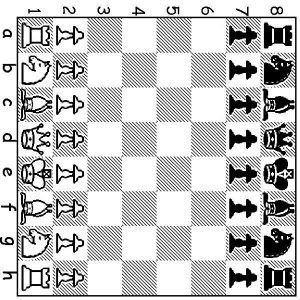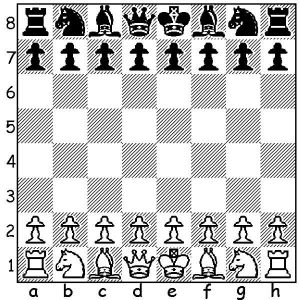By Jerry Nash

Both the chess board and the game of chess call attention to the same literacy proficiencies demanded by other forms of media, both print and graphic. These include the following:
- Visual Orientation
- Symbolic Language
- Translation from Two-dimensional to Three-dimensional
- Pattern Recognition
 The two diagrams on the right serve to illustrate all four of these required skills. Those familiar with the game (in other words, those who have already acquired the appropriate chess literacy skills), will understand that the top diagram would almost never be found in a chess-related book, magazine, newspaper article, or even a computer-generated chess game or tutorial.
The two diagrams on the right serve to illustrate all four of these required skills. Those familiar with the game (in other words, those who have already acquired the appropriate chess literacy skills), will understand that the top diagram would almost never be found in a chess-related book, magazine, newspaper article, or even a computer-generated chess game or tutorial.
Just as we read sentences from left to right, the standard for the visual orientation of chess diagrams in any medium would generally have the White pieces at the bottom, the Black pieces at the top. The symbols that comprise the language of modern chess, algebraic notation, are the numbers on the left and the alphabet displayed at the bottom.
Just as an elementary school student must learn to recognize the patterns contained in letters, words, and sentences, the beginning chess player must learn to recognize the patterns contained on the board and to translate the symbols for the chess pieces in order to follow the game on paper or on a computer screen or to re-create the game on a “real” board. The second diagram “of course” represents the starting position of a game of chess. However, only the person who has learned the pattern would know this fact. Otherwise, these symbols could be seen simply as a random collection of symbols – even if they are mirrored on the opposite side of the board.
How can we apply this chess knowledge to build literacy abilities in the classroom? By asking students to set up the chess board from the bottom diagram, we can incorporate all of these skills at once. Students can share verbally how they accomplished the task. The teacher can then assist students in drawing parallels to how they are learning to read. Many students will be excited to realize that they are already learning a new language!
